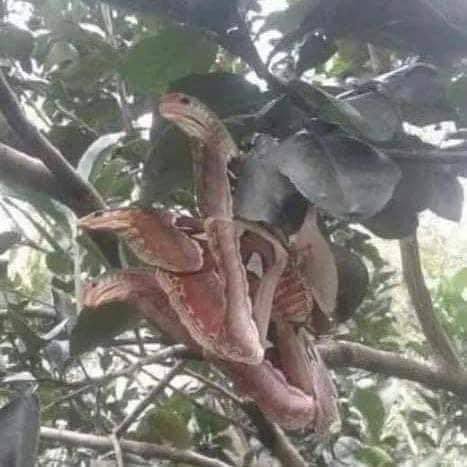In the tropical forests of Southeast Asia lives a moth so massive and mysterious that it often gets mistaken for something far more dangerous — a snake.
Meet the Atlas moth, one of the largest moths in the world, with a wingspan reaching up to 25 centimeters (10 inches). But it’s not just its size that stuns scientists and nature lovers — it’s its incredible defense mechanism.
Nature’s Master of Deception
At first glance, the tips of the Atlas moth’s wings look bizarre — shaped like the head of a snake, complete with realistic-looking scales and eyes. When threatened by a predator like a bird or lizard, the moth doesn’t fly away immediately. Instead, it spreads its wings, remaining completely still, showcasing the snake-head pattern at the wing tips.
To an untrained eye — or to a would-be attacker — it looks just like a coiled, alert snake ready to strike. This trick is so effective that many predators back off, mistaking the moth for a dangerous reptile.
Why It Needs the Illusion
Unlike butterflies that feed on nectar, adult Atlas moths don’t eat at all. In fact, they don’t even have functioning mouths. Once they emerge from their cocoons, they live for only 5 to 7 days, surviving off the fat they stored as caterpillars. Their sole mission is to find a mate and reproduce.
With no time to waste and no ability to feed or flee efficiently, defense becomes crucial — and their snake-mimicking wings are their best weapon.
Even Their Cocoons Are Useful
Atlas moth cocoons are so strong and silky that in some regions, especially in India, people use them as natural wallets or purses after the moth has emerged.
The Atlas moth is a breathtaking example of evolution’s creativity.
It reminds us that in the animal kingdom, intelligence doesn’t always come from the brain — sometimes, it’s woven into the very fabric of survival.
